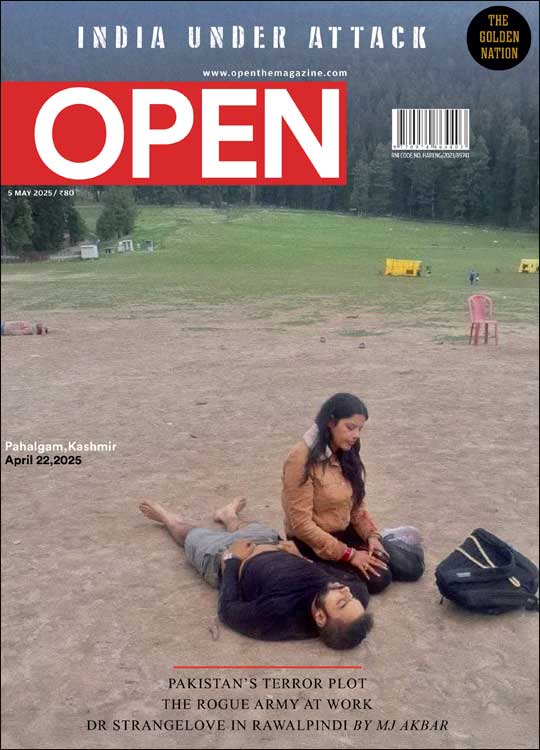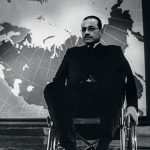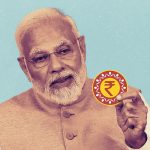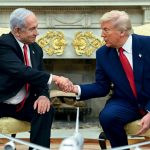Kashmir: An Uneasy Jewel in the Indian Crown
Kashmir and the fallacy of the secularism argument
 Sumantra Bose
Sumantra Bose
 Sumantra Bose
|
15 Sep, 2016
Sumantra Bose
|
15 Sep, 2016
/wp-content/uploads/2016/09/Anuneasy1.jpg)
ARE KASHMIRIS—MEANING, in this essay, the Kashmiri-speaking Muslims who live largely in the Kashmir Valley—paragons of secularism or zealots driven by religious identity? Are they Sufis, or are they actually Wahhabis? In Indian perception and discourse, the first image dominated for four decades, until 1990, when the ‘paradise’ (jannat) turned into a cesspit of violence and the second image—the polar opposite of the first—came to the fore. What, then, really defines these people? Are they one or the other? Or perhaps they suffer from bipolar disorder?
The Indian lament that Kashmiris have let down secular, democratic India, that they have betrayed the ideal of liberality they once collectively personified, is not new. A senior Indian anthropologist, also a ‘native informant’ as a Kashmiri Pandit, wrote in 1993: ‘The way to hell… is paved with good intentions, and so it has been in Kashmir. Although the state has been ruled since 1947 by a succession of governments headed by Muslim chief ministers, and the representation of Muslims in the bureaucracy and the professions has very considerably improved, a secessionist movement has erupted there which has turned violent… What the turbulent elements are asking for is, in effect, another Partition.’
For most of the time between 1947 and the eruption of 1990, those governments, headed no doubt by Muslims, were unrepresentative (and therefore unaccountable to the people), installed by a combination of force and fraud through an extraordinary series of farcical ‘elections’. The autonomy of Jammu & Kashmir enshrined in Article 370 of India’s Constitution was rendered a dead letter by the mid-1960s through interventions from the Centre, with the readily given consent of such J&K governments post-1953. The Kashmir Valley was a police-state since 1953, ruled by draconian laws. Its popular icon, Sheikh Mohammad Abdullah, was incarcerated for almost the entire period between 1953 and 1975, when he finally surrendered to Indian power and was rewarded with an emasculated chief ministership and partial control of the police-state.
So what? Didn’t we (Indians) give them (Kashmiris) free, or heavily subsidised, rice to compensate down the decades? I have been confronted by Indian audiences with this ‘rice thesis’ of why they should be grateful and loyal to us—the last time after a public talk I gave in September 2010 in Kolkata, my hometown, in which I tried to explain the roots of the stone-pelting rage that had gripped the Valley since June that year. I was perplexed because the Kashmir Valley is itself a paddy-growing area and the finest rice I have ever tasted is the Valley’s home-grown product, served with goshtaba, rista, and other delectable Kashmiri meat specialties.
The Valley’s conversion to Islam largely occurred in the late 1300s. It was catalysed by Mir Sayyid Ali Hamadani (Shah Hamdan to Kashmiris), a Persian Sufi who visited the Valley in the late 14th century. The Kashmiri form of Islam is however associated above all with the life and teachings of Sheikh Nooruddin Noorani (or Nund Rishi), a local Sufi who lived from about 1377 to 1440 and is known as Alamdar- e-Kashmir (patron saint). His mausoleum-shrine in Charar-e-Sharief was the site of a literally incendiary 1995 stand-off between the Indian Army and Pakistani mehmaan (guest) militants. The main influence on Noorani was Lalleshwari (1320-1392), a woman mystic and poet of the Hindu Shaivite tradition. She is called Lal Ded by Kashmiris. It is this syncretistic heritage, formed of a hybrid of Sufism and Shaivism, that composes the cultural foundation of Kashmiri identity (Kashmiriyat). It is still the basis of the Valley’s culture.
The Valley’s people have a long and bitter experience of the hypocrisy and perfidy of secular Indian governments, hence the faint hope in the anti-secularist alternative
The mass political consciousness and mobilisation that developed in the Valley from the 1930s was however always, and consistently, expressed in an emphatically Muslim voice. This was not simply due to the demographic fact of a huge Muslim majority. One need not buy the moaning Kashmiri narrative of a succession of ‘occupiers’—Mughals, Afghans, Sikhs, Dogras, Indians—to recognise that the princely state of 1846-1947 was indeed a dark, dire period for the Valley’s denizens. The British official Walter Lawrence wrote that ‘when I came to Kashmir in 1889, I found the people sullen, desperate and suspicious. They were serfs without any rights… the system of administration had degraded people and taken all heart out of them’. Begar (forced labour) was the norm, along with recurrent episodes of famine. Even before Lawrence, another Englishman, Robert Thorp, wrote in a book titled Cashmere Misgovernment, published in Calcutta in 1868: ‘In no portion of the [1846] treaty made with Gulab Singh was the slightest provision made for the just or humane government of the people of Cashmere, upon whom we forced a government they detested’. In 1929, Sir Albion Bannerji, a Bengali Christian, resigned as the princely state’s foreign and political minister after two years in the post. He explained why to the Associated Press: ‘Jammu and Kashmir State is labouring under many disadvantages with a large Muhammedan population absolutely illiterate [and] labouring under poverty… and governed like dumb-driven cattle. There is no touch between the Government and the people [and] no opportunity for representing grievances’. CE Tyndale Biscoe, a British missionary and educationist, solemnly contemplated in 1922 that ‘if we Britishers had to undergo what the Kashmiris have suffered, we might also have lost our manhood’. Gawasha Nath Kaul, a Kashmiri Pandit, summed up conditions in the Valley in a book published in 1924 as ‘frightful’.
The disturbances of 13 July 1931—commemorated as ‘Martyrs’ Day’ in the Valley by the J&K government and anti-India forces alike—were triggered by the court trial of a man who had made inflammatory remarks calling for an uprising at a mosque congregation. After Maharaja Hari Singh’s police killed 22 protestors in Srinagar, rioters attacked and sacked a commercial quarter of the city populated mainly by Kashmiri Pandits and Punjabi Hindu traders. In January 1965, elements of massive crowds dispersing after a meeting at the Hazratbal shrine addressed by Sheikh Abdullah—during which he had sharply criticised the Centre’s decision to bring J&K under the purview of Articles 356 and 357 of the Indian Constitution and condemned the sudden metamorphosis of the post-1953 ruling ‘National Conference’ clique into the J&K Pradesh Congress—similarly looted and burned shops and businesses owned by Pandits and other Hindus. The insurrection-like upsurge in the Valley in the winter of 1963-64, the most serious outbreak of disorder between 1947 and 1990, was sparked by a faith-based issue— the sudden disappearance of the holy relic said to be the Prophet’s hair from the Hazratbal shrine. This sparked an explosion of a decade of pent-up rage at the thuggish and corrupt New Delhi-backed regime of Bakshi Ghulam Mohammed. Nehru’s blasé attitude to the Bakshi regime was very similar to what President Lyndon Johnson reportedly said about an especially odious US-backed central American dictator in the 1960s: “He may be a bastard, but he’s our bastard.”
It’s an interesting footnote that once Bakshi outlived his usefulness and fell out of favour with his masters, he was arrested in 1964 under the British- era ‘Defence of India Rules’ and sent to the same prison in the Jammu region where Abdullah had been consigned 11 years earlier. The rules were replaced after the mid-1960s by the J&K Preventive Detention Act (from 1978, the J&K Public Safety Act), the central Unlawful Activities (Prevention) Act and, from 1990, the Armed Forces Special Powers Act (AFSPA). The AFSPA is directly descended from an emergency regulation used by the British in 1942-43 as legal dressing for their brutal suppression of the Congress’ ‘Quit India’ movement, and was first deployed in independent India in Naga-inhabited areas of the North-east by Nehru’s Government in the late 1950s.
Nehru’s attitude to Bakshi was similar to what President Johnson reportedly said about an odious US-backed dictator: ‘He may be a bastard, but he’s our bastard’
Sheikh Abdullah’s once- mesmeric hold over the Valley’s common people owed much to his ability to recite beautifully from the Holy Book (the Qur’an) during his speeches, and to the fact that from the 1940s, his followers gained control over most of the Valley’s mosques and shrines. Asked in the late 1970s how he succeeded in marginalising clerics, including pro-Pakistan ones such as the mirwaiz family of Srinagar, he chuckled: “By becoming a mullah myself.” This was but natural. He was the leader of an oppressed Muslim people, whom he—to his lasting credit—delivered from serfdom through land reforms in the early 1950s. He did soften the blow for Pandits, who owned almost a third of the Valley’s farmland, by allowing them to retain their fruit orchards and reserving 10 per cent of J&K state government jobs for them, far in excess of their proportion of the state’s population.
In the princely state, Muslims—77 per cent of the population according to the 1941 Census—were ineligible to serve as officers in the police and military forces, and were almost non-existent in the civil administration. When Abdullah’s National Conference launched the ‘Quit Kashmir’ agitation against the monarchy in 1946,modelled on the Congress’ ‘Quit India’ campaign against the Raj, the atrocities committed by the Hindu and Sikh enforcers of the princely state’s authority ‘caused tremendous commotion in the Valley, leaving bitter memories of cruelties firmly implanted in the minds of the normally peaceful Kashmiris’, wrote Jyoti Bhushan Dasgupta, who published a fine book on the Kashmir conflict in 1968.
Of course, just a year later, the Valley’s people would suffer even more trauma at the hands of raiders from Pakistan. Nonetheless, the formation of their political (as distinct from cultural) identity was under the princely state, where cow slaughter attracted a death sentence until 1920, later reduced under British pressure to jail for ten years and then to seven years. In 1890, Colonel R Parry Nisbet, the British ‘resident’ (supervisor) in the princely state, wrote to his superiors that the state should ‘no longer be governed solely to benefit the ruling family and the rapacious horde of Hindu officials and Pandits, but also for its people, the long suffering indigenous Muhammadans’. A half-century later, in 1941, Prem Nath Bazaz described conditions in the Valley: ‘The poverty of the Muslim masses is appalling. Dressed in rags and barefoot, a Muslim peasant presents the appearance of a starving beggar… Most are landless labourers, working as serfs for absentee landlords’.
So where did this notion that the Kashmir Valley is the ultimate expression and repository of the idea of secular India come from? Just as that notion is highly problematic, it’s a myth that J&K was untouched by Partition carnage. In late 1947, as Hindu refugees from Pakistan poured into the Jammu region, the local RSS, headed by Prem Nath Dogra, led mass killings of Muslims in Jammu’s southern districts, including the city. Tens of thousands of Jammu Muslims were killed and hundreds of thousands fled to Pakistan. In the Valley, the seemingly idyllic coexistence of Muslims and Pandits was always uneasy, the apparent harmony masking deep undercurrents of suspicion, resentment and fear. The façade disintegrated in 1990.
Sheikh Abdullah was incarcerated between 1953 and 1975, when he finally surrendered to Indian power and was rewarded with an emasculated chief ministership
Kashmir has been an integral part of the idea of Pakistan ever since the concept of a homeland comprising Muslim-majority regions of north-west India was dreamed up by an Indian Muslim student at Cambridge University in 1933. Once Pakistan became a reality, its leaders naturally expected to gain all or almost all of the princely state: as a 77 per cent Muslim entity adjoining and closely connected by trade, commercial, transport and cultural links with their Punjab and Frontier provinces.
India, by contrast, did not have a clearly elaborated ideological case for ownership of Kashmir until after it became the prime bone of contention with Pakistan. That ideological argument developed ex post facto, from the 1950s, and fixated on the natural affinity of ‘secular’ India and ‘secular’ Kashmir. Two consequences followed. First, the allegedly secular ethos of the Valley’s Muslim population was romanticised and exaggerated, and the cultural legacy of Kashmiriyat appropriated and distorted in the service of a political agenda. Second, Kashmiris became both prize exhibits and prime victims of the Indian secular state. The description of Kashmir as the ‘jewel in the crown’ of secular India has a disturbing resemblance to the one-time description of the Indian Subcontinent as the jewel in the crown of the British Empire.
Just as individual personalities are complex and multi-faceted, so are societal personalities. The Valley’s is no exception; it is not one-dimensional but a compound of different elements, influences and tendencies, like any community found in India. The mythologised image of its people as secular angels who naturally belong with—and to—us could be sustained until 1990. Since then, confusion has marked the Indian view of Kashmiris, because they have failed to live up to that image. The simplistic glorification of their secular spirit has often been replaced by its equally flawed opposite: pathologisation.
India’s Kashmir problem has several parallels with Turkey’s Kurdish problem. In both cases, avowedly ‘secular’ state elites made the problem through their policies during their decades of power. After anti-secularists gained and then consolidated their grip over state power in Turkey post-2002, many Kurds looked to the new elite at the helm of the Turkish state, untainted by secularist misdeeds and unencumbered by secularist baggage, to address their grievances. Since mid-2015, that hope has completely unravelled, as the Islamist government of Turkey has turned its back on a political approach and reverted to the old methods of brute repression in the rebellious Kurdish areas of eastern and south-eastern Turkey.
The cautious hope many Kashmiris reposed in Vajpayee when he led India, and the tenuous faith some among them still have in his ‘path’, is similar. The Valley’s people have a long and bitter experience of the hypocrisy and perfidy of secular Indian governments and leaders; hence the faint hope in the anti-secularist alternative.
A no-nonsense stance on curbing the current unrest in the Valley is not nonsensical. There are anti-social elements involved, and there is instigation both internal and external. The Hurriyat leaders are a dubious bunch (as Kashmiris well know). There are two other J&K regions. All true. Yet once the dust settles, a political approach will be needed if India does not want to be represented in the Valley simply by pellet guns, night raids on villages, curfews, and Army deployments. That reeks of occupation, and the situation is already an international embarrassment, at sharp odds with the image of India the apex leadership in New Delhi wants to present to the world. The lesson of 2016 is that the problem can’t be complacently left to fester; it needs sustained strategic engagement. To be intelligent and effective, such a strategy must avoid the folly of misdiagnosing the Valley, yet again.

/wp-content/uploads/2025/04/ToC-Cover-Pahalgam.jpg)













More Columns
Hindu lives too matter: US spy chief Tulsi Gabbard Open
The Line Must Move Shubhrastha
Khadi sector scaling new heights even as FMCG giants incur losses Open